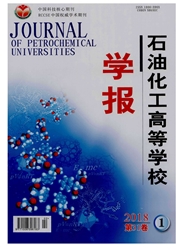

 中文摘要:
中文摘要:
采用电化学交流阻抗技术和显微微观观察研究了X70钢在0.5mol/LNaHCO3+0.5mol/LNaCl溶液中的腐蚀行为。分析了外加应力水平对开路电位、极化电阻及表面形貌的影响。结果表明,在弹性载荷范围内,X70钢的耐蚀性下降。外加应力主要从两个方面促进了金属的腐蚀溶解:首先是在应力集中区域,原子排列发生形变,随着外加应力的增大,晶格缺陷增多,原子活化能提高,从而使平衡电位急剧下降;二是在应力集中区域,表面钝化膜发生不同程度的破坏或局部减薄,导致在钝化膜破裂或薄弱的位置上发生优先腐蚀并溶解。在外加应力和侵蚀性介质的共同作用下,X70钢表面的钝化膜破裂,试样局部塑性变形增加,导致局部电位发生变化,从而使其与周围基体形成了大阴极小阳极的腐蚀微电池,为点蚀形核创造了条件。
 英文摘要:
英文摘要:
Electrochemical impedance spectrum technology and morphology observing were used to study the corrosion behaviors of X70 pipeline steel in 0.5 mol/L NaHCO3 + 0.5 mol/L NaCl solution. The results show that X70 steel corrosion resistant declined within the elastic load range. The metal corrosion was promoted by applied stress mainly due to two aspects: one is the atoms are arranged when deformed, lattice defects and atomic activation energy increased in the stress concentration area with the applied stress increased, which resulted in the balance potential decreased sharply; another is the surface passivation membrane is damaged or local thinned, which resulted in corrosion occurred at passivation membrane rupture or weak position. X70 steel surface passivation membrane ruptured and sample local plastic deformation increased which lead to local potential changing under the common function of the applied stress and erosive medium. The corrosion micro cell formed around the matrix and created a condition for the pitting nucleation.
 同期刊论文项目
同期刊论文项目
 同项目期刊论文
同项目期刊论文
 期刊信息
期刊信息
